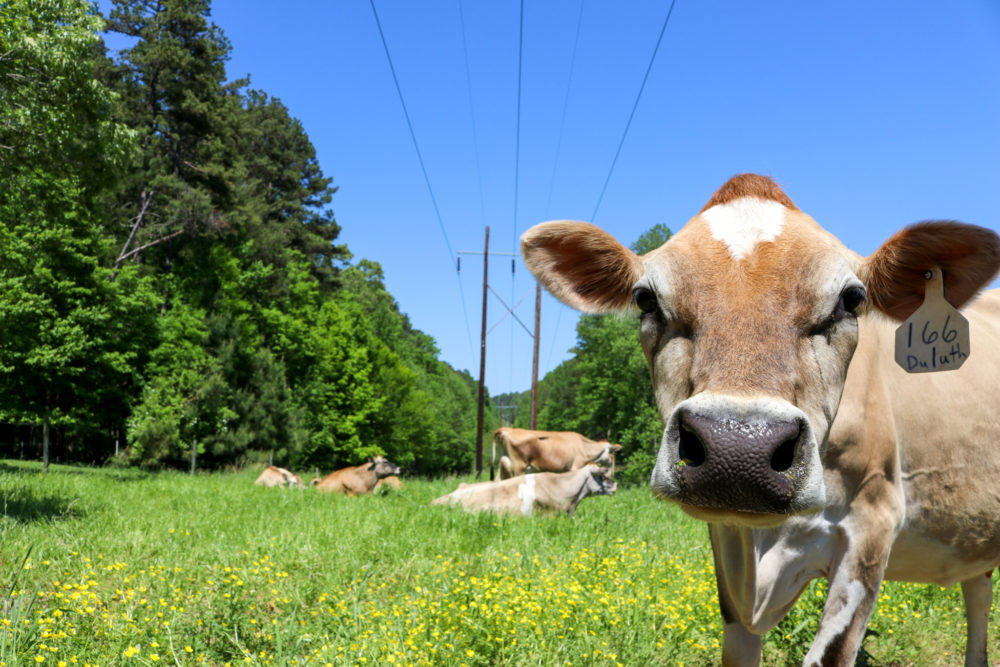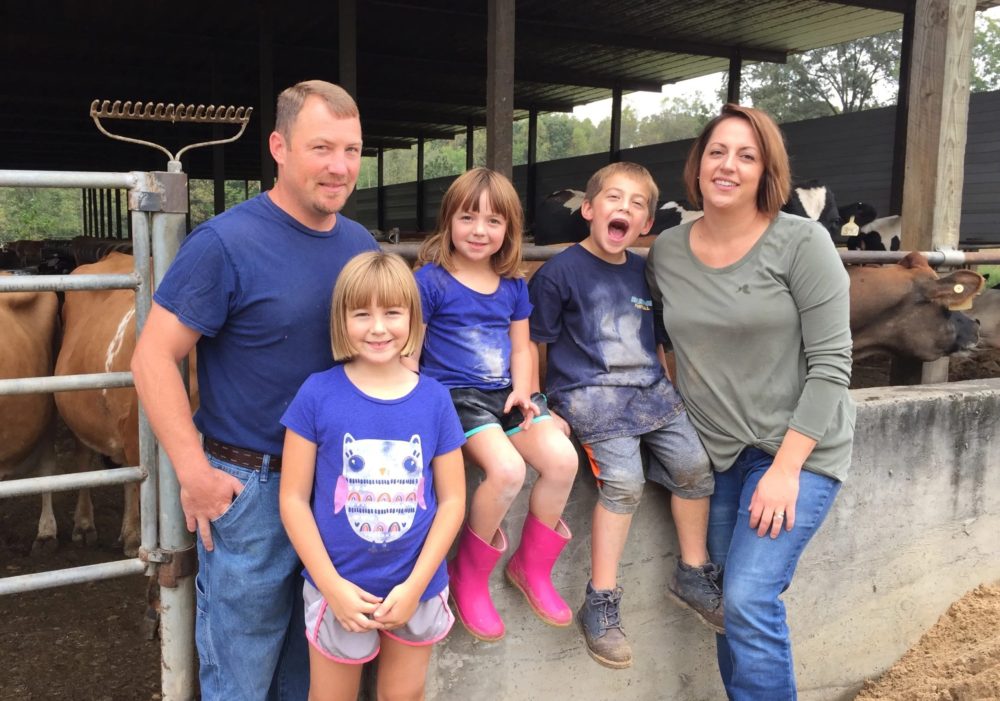by Katie MacKinnon | Thursday, Sept. 8, 2022 –
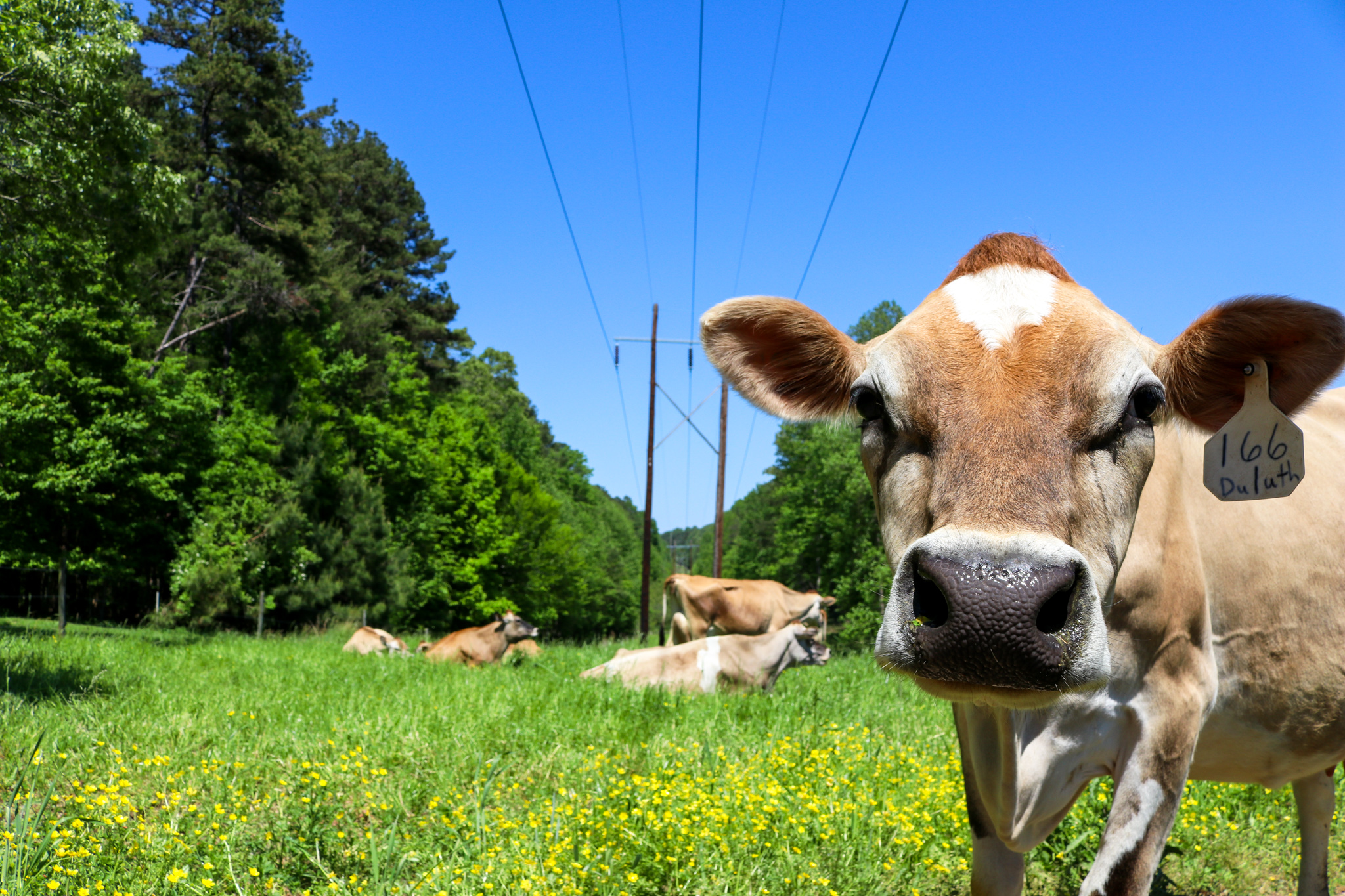
The death of their milk hand was the last straw that convinced the Cornwell family it was time to move away from working in the dairy industry. After needing to supplement the family income with teaching jobs for several years, Mary Cornwell and her husband decided to sell their milking cows last year.
As young adults, Cornwell and her husband leased a farm from an older couple who wanted to retire. Eventually, they were able to purchase the farm and animals, but not without challenges along the way.
Keeping Up With a Changing Industry
Cornwell, co-owner of Cornwell Family Dairy, said that the large financial input was the most challenging part about running a small dairy farm, needing to invest in equipment, land, and animals before receiving any profits. At the beginning, Cornwell and her husband worked to upgrade the farm and learn the ins and outs of the industry.
“For the first couple of years, it was making mistakes and learning and trying to grow and make our own changes to our farm using new technology in some ways and new changes to agriculture and adapting it to our view of farming,” Cornwell said.
Cornwell Family Farm (Mary pictured right) won the 2017 Cleveland County Farm Bureau’s Farm Family of the Year award. Credit: The Shelby Star.
She said that a shortage of dairy farmers in the Southeast has led to a need for milk to be shipped from other parts of the country. This leads to higher costs for the dairy farmers still in the region.
With an increase in larger dairy farms, outsourcing of milk, and a decrease in demand for their products, many North Carolina dairy farmers have been forced out of the industry in the last decade.
According to The United States Department of Agriculture, the Southeast has about half the dairy farms it did 10 years ago. This seems to be a trend throughout the country, as the USDA reported a loss of over 2,500 dairy farms nationally from 2019 to 2020.
This decrease appears to be due to the continuously low prices farmers are able to get for their milk.
“The Southeast has about half the dairy farms it did 10 years ago.”
“No matter how great you’re doing farming and how much cow comfort there is and if they are milking great, it all depends on the price of milk, the price of fertilizer, the price of feed at the time, in order to make the business run and grow,” Cornwell said.
Small farmers face unique demands in their dependence on co-ops and their inability to buy in bulk. This often forces them to face higher input costs that prevent them from competing with larger farms.
Jeff Cornwell, Mary’s husband, explains farm operations in this 2018 video by Farm Bureau.
Adapting to Stay in Business
Rather than moving away from the dairy industry, Amy Poirier’s family chose to find a niche within it. Poirier’s brother decided to convert their dairy farm to an organic dairy farm.
“Go big, go out of business, or go niche, and that was the path he chose,” Poirier said.
This transition has allowed her family to sell milk for higher prices while having a more cyclical relationship with the land that they farm on. Poirier said that this new way of farming drew her to become more involved in the family business.
“I saw the whole circle,” she said. “The entire ecological cycle, and as I have kind of developed my knowledge of those ecological cycles, it kind of made sense.”
Poirier teaches agriculture classes at Mitchell Community College in Statesville, NC, and is on the Carolina Farm Stewardship Association (CFSA) board. She also runs an organic farm with her husband that raises pasture hogs, poultry, and crops. This allows her farm to work in collaboration with her brother’s dairy.
“Our cattle health depends on plant health which depends on soil health.”
“Our cattle health depends on plant health which depends on soil health,” Poirier said.
Although organic farming allows farmers to charge higher prices for their milk, Poirier said that it can also create challenges for farmers. Her brother is part of Organic Valley, a dairy farmer cooperative, which holds the cost of milk steady for producers.
While this is often a benefit, this means that producers get the same price for the milk even at times when they could be making more due to increased market prices.
Another way that producers can avoid market fluctuations is to create their own products, rather than sell milk directly. A common way that this is done is by producing ice cream.
While this allows producers to set their own prices based on the market, it is not always successful.
Maple View Farm & Milk Company of Hillsborough, NC, closed its doors in September 2021 after 25 years of milk production. The farm supplied dairy to the associated Maple View Farm Ice Cream and Agricultural Center. The ice cream store has stayed in business, but they now purchase their milk from a dairy in Ayden, NC.
Creating their own product does not work for all dairy farms, but it has for Chapel Hill Creamery. Portia McKnight, co-owner of Chapel Hill Creamery, said turning milk into cheese makes her business more resistant to changing milk prices. Based in Chapel Hill, NC, the creamery is a 50-acre farmstead Jersey-cow dairy specializing in cheese and also offers whey-fed pork and beef.
A closer look at Chapel Hill Creamery by Weaver Street Market (2020) and Whole Foods Market (2015).
An Industry in Danger
McKnight was quick to say that the most prevalent challenges in the dairy industry do not just impact small farmers.
“No matter the size of the dairy, small or large, we’re all in it together,” she said. “And by that I mean, if the dairies start to disappear, which they have, the infrastructure starts to disappear, and when the infrastructure disappears, it’s more difficult for everybody.”
As dairy farmers are forced out of the industry by high prices and low return on investment, it becomes difficult for the remaining farmers to have access to necessary materials and expertise.
“If the dairies start to disappear, which they have, the infrastructure starts to disappear, and when the infrastructure disappears it’s more difficult for everybody.”
“There used to be a choice of veterinarians, and now the vet we use is getting close to retirement age, and I’m not sure what’s going to happen when she does retire because there’s just not very much infrastructure here,” McKnight said.
She said that although there has been a recent interest in local farming, dairy is often left out of the conversation.
“People do not understand that the milk that is on their grocery store shelves is not from the cows that are in your county or one county over,” she said. “More and more of that milk is coming from further and further away.”
While shipping milk across the country often lowers prices for consumers, it leaves local farms with little support.
McKnight said that as more milk comes from fewer, but larger producers across the country, the amount of fuel associated with shipping milk increases. This raises the overall cost and the environmental impact of milk production.
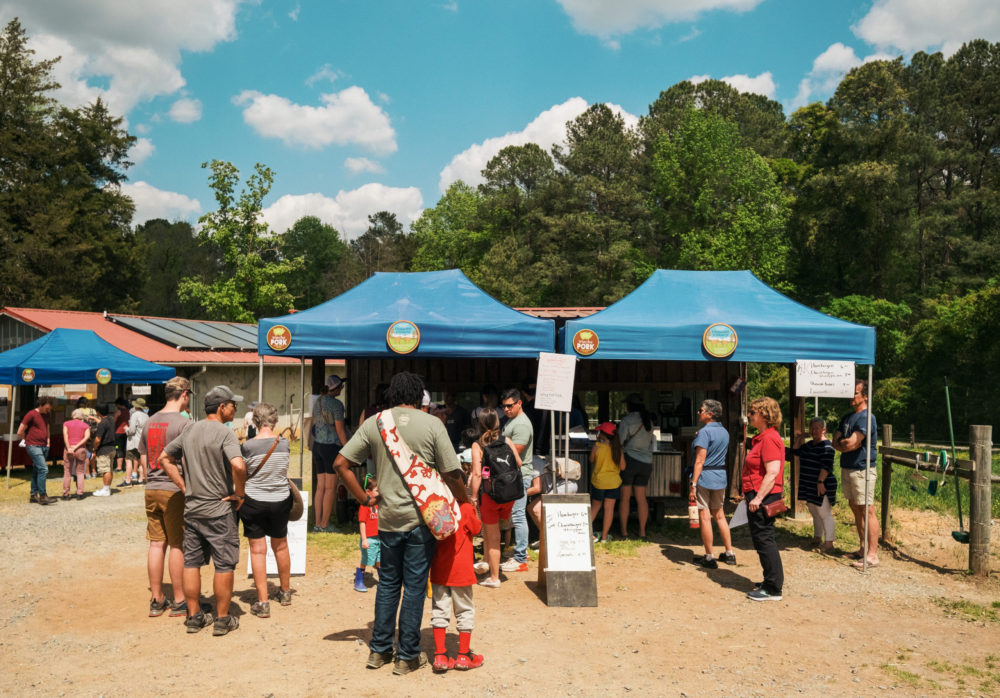
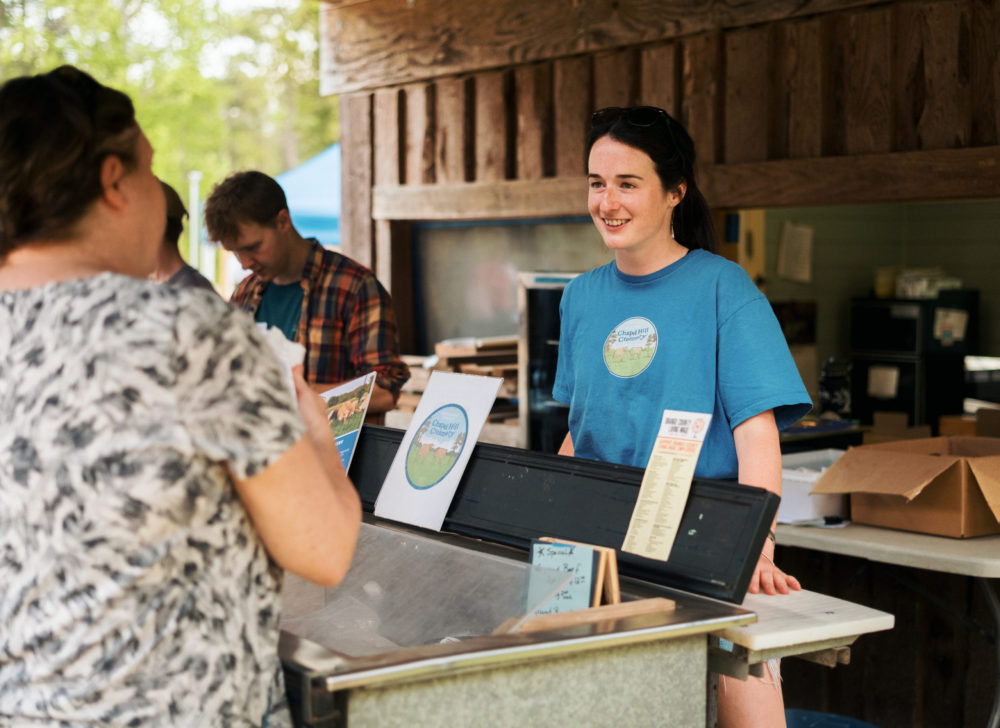
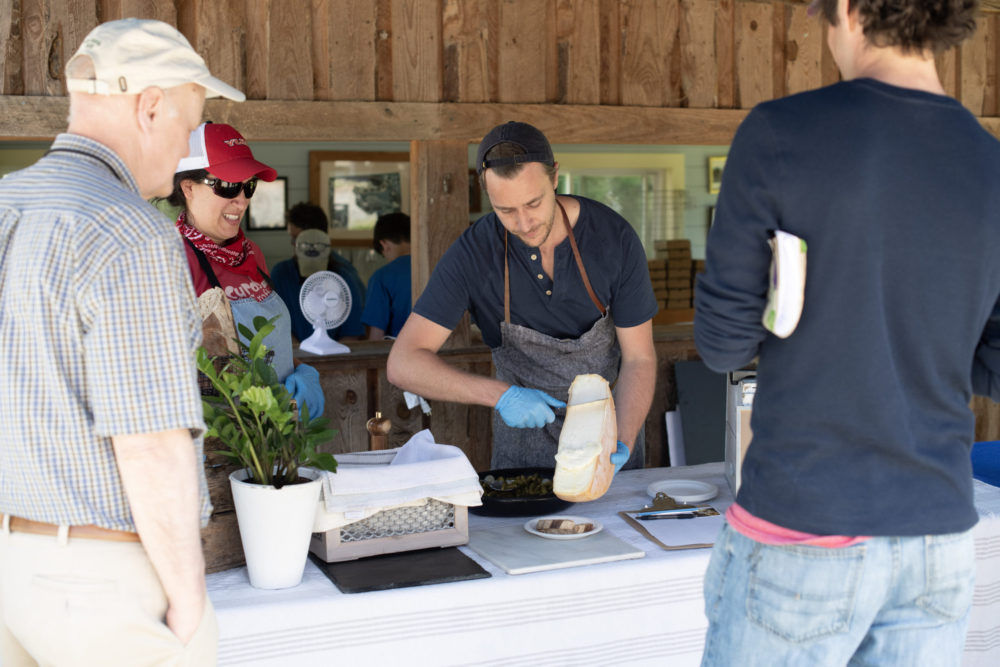
Chapel Hill Creamery is a CFSA member and a long-time participating farm on CFSA’s annual Piedmont Farm Tour. Above and Middle: Farm visitors buying cheese on the farm. Below: The creamery serves up melted raclette atop bread for hungry tourgoers each year. Credit and permission: Jamie Kite.
Sustainable Change
The Biden Administration is moving to incentivize farmers to incorporate more sustainable practices into their farming. The Growing Climate Solutions Act, which passed in the Senate in June 2021, would help producers generate and sell carbon credits.
“When milk is cheap, what happens is dairy farm families really suffer, but even more than that, the cows suffer.”
McKnight said that incentives like this are essential in changing farming practices without farmers going broke in the process.
She said that she hopes to continue the conversation about local dairy farming and encourage people to value quality in their food rather than the lowest cost.
“When milk is cheap, what happens is dairy farm families really suffer, but even more than that, the cows suffer,” McKnight said.
Understanding where your food comes from and putting money into these industries seems to be what local dairy farmers think is necessary for their survival. Both Cornwell and McKnight were clear to say that most dairy farmers care about their cows regardless of the size of the farm.
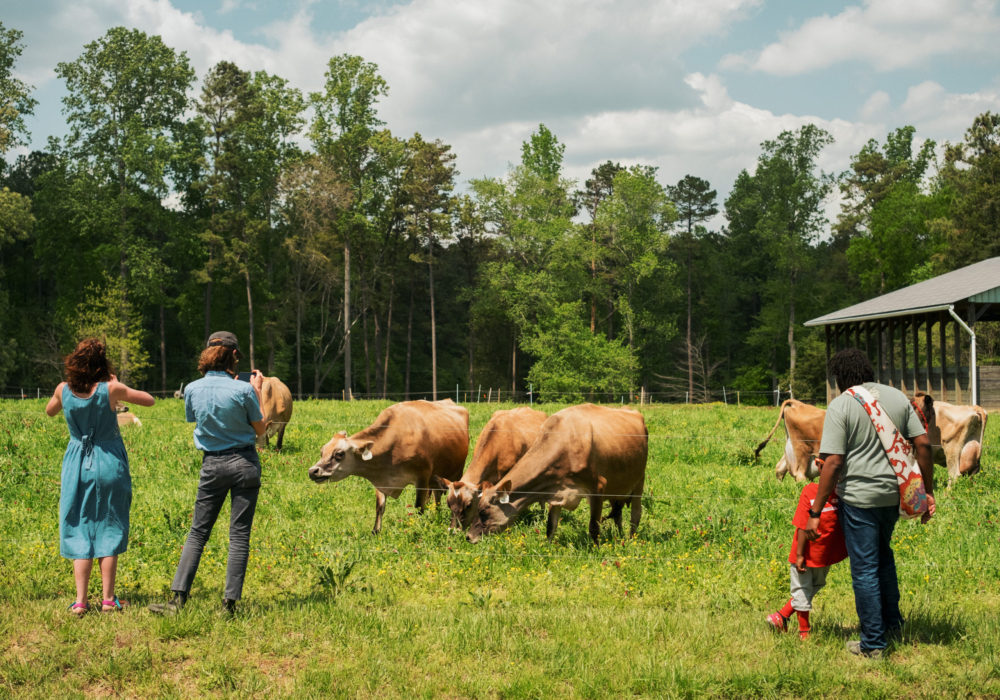
Supporting local dairy production allows farmers to treat their cows well, providing them the best care and giving consumers the best products. Without this support, dairy farmers will continue to be pushed out of North Carolina.
“The misconception would be that they don’t care, but actually, if the farmer didn’t care about the cow, they would be out of business very quickly,” Cornwell said.
About the Author: Katie MacKinnon
I am a senior at UNC Chapel Hill studying environmental studies and journalism. I am passionate about storytelling to bring about change through community. I love to see the impact that knowledge about our earth can have on people’s behavior (and I really just love spending time outside running, hiking, and taking it all in)!
Find more of Katie’s work on Twitter (@k8e_mack).
Images: Lead photo of Duluth was taken at Chapel Hill Creamery by CFSA. Unless otherwise noted, all photos shared were taken and used with permission by Casey Toth.


